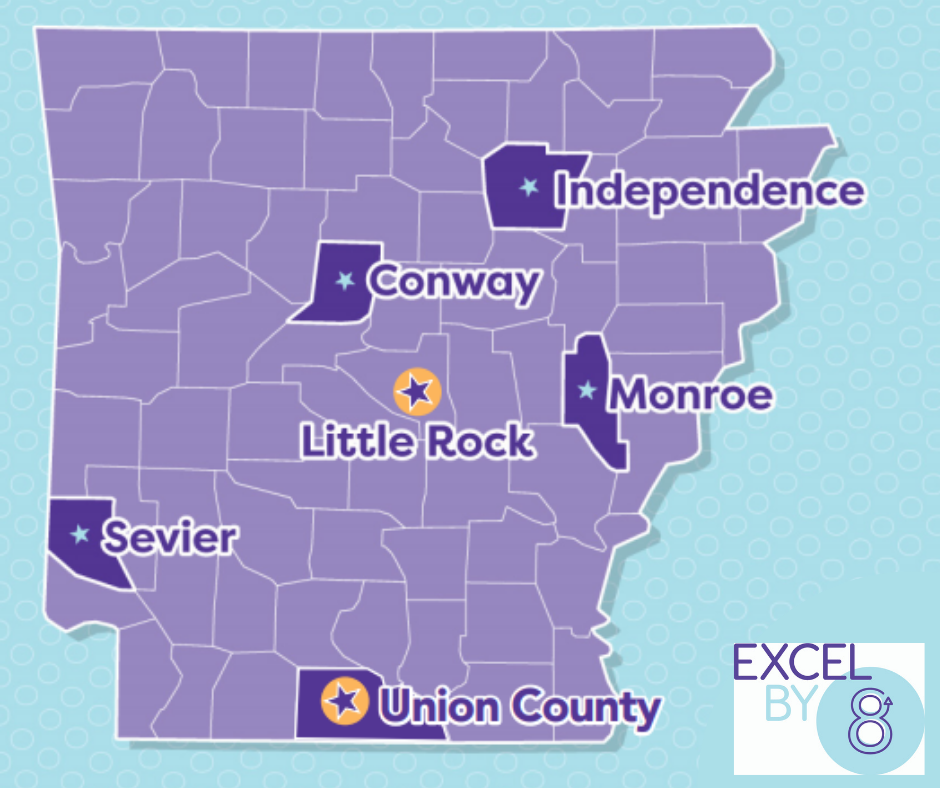
Conway, Independence, Monroe, Pulaski, Sevier, and, now, Union.
How did these Arkansas counties get involved with Excel by Eight (E8)?
Designed to be local models for change, these E8 Communities are focused on improving children’s health and education outcomes by tackling gaps in locally-available family, community, health and education-related support systems. Jessi Rice, an E8 Community Consultant, explains more below:
What goes into a city or county becoming an E8 Community?
It is a reciprocal process. E8 invites communities to leverage our data-driven processes, and the community asks us to serve as a co-facilitator. In general, we look for communities where there might be a need or where there are individuals or organizations who have the capacity to bring diverse and relevant players to the table. We also see whether there are local development efforts, such as the Sevier County Coalition or the City of Little Rock’s Lifelong Learning Cabinet, that we can help amplify. If none exist, we determine whether communities are willing or able to tackle existing disparities. From experience, we’ve found communities achieve the most success when steering committee members work across silos to find systemic and long-lasting solutions.
How does an E8 Community form a local steering committee?
To date, we have worked with local champions to help recruit key players in the health, education, business, and social sectors that align with the E8 resource grid as well as parents and community members. We understand this work requires a significant investment of time and talent, so we are very forthcoming about the nature of the initiative. Once individuals sign on, we formalize the arrangement with a memorandum of understanding between E8 and the steering committee.
Is there a process each E8 Community follows?
We begin by assessing the resource grid and gathering public input. We recommend a toolkit of activities and techniques to assist with this process. However, we encourage flexibility. We want local leaders to adapt our methods to fit their community’s needs and culture. After the research phase, they analyze the data, pinpoint root causes, and set strategies to meet their goals. Then, they officially launch our work to improve children’s development outcomes from the ground up.
Will each action plan include the same components?
The E8 resource grid includes 24 points of interest. Instead of creating goals for each square, we use local context to help communities identify the areas of greatest need or impact. While the plans may differ, we have seen some general trends. For example, access to high-quality early childhood education and food insecurity have been priorities for nearly every community.
What should a city or county do if it’s interested in becoming an E8 Community?
Ensuring all children can meet their full educational and health potential will require a concerted effort from all of us. We encourage anyone who is interested in supporting E8’s efforts to contact our team about next steps.
